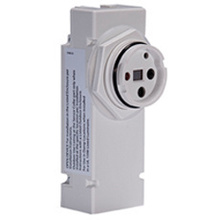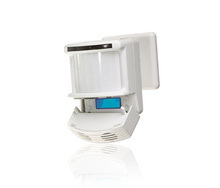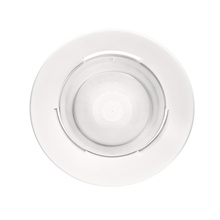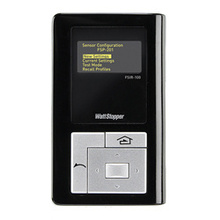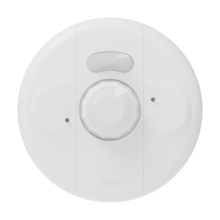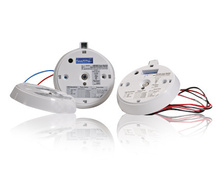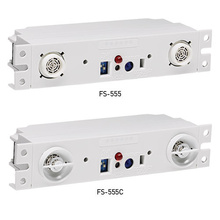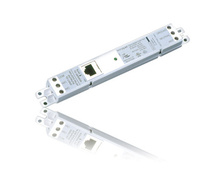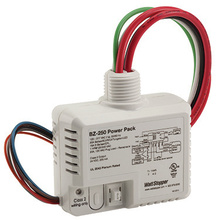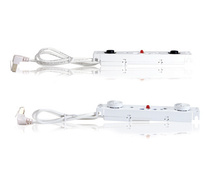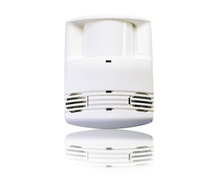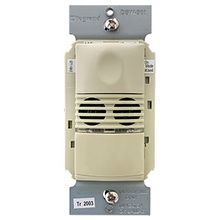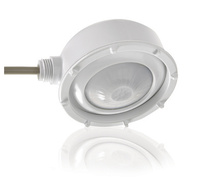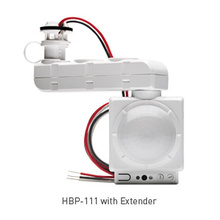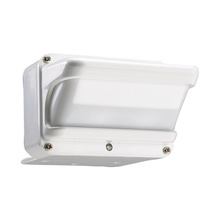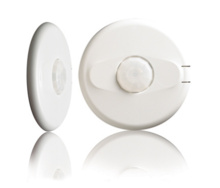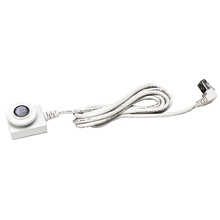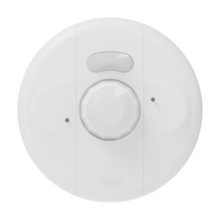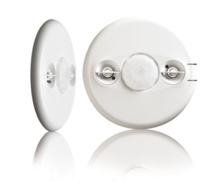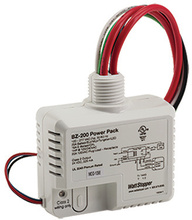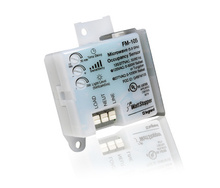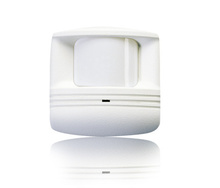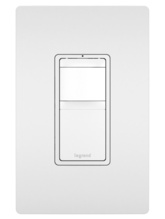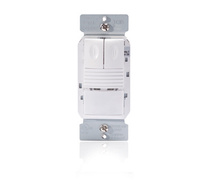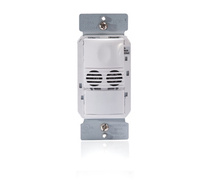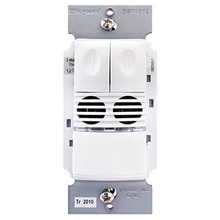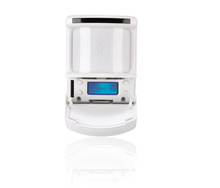Occupancy and Vacancy Sensors
Occupancy and Vacancy Sensors maximize energy savings, ensuring that lights are turned off or to a lower level when spaces are unoccupied or adequate daylight exists. Sensor options include passive infrared, ultrasonic, and a combined dual technology of both passive infrared and ultrasonic. For applications from warehouses and parking garages to offices and classrooms, Wattstopper’s energy-efficient occupancy and vacancy sensors offer the ultimate convenience and security for commercial spaces.Brand
Choose from one of Legrand's brands.
Type
Value that Specifically Names the Type/the Application Value of the Closest Piece of Equipment/the Designated Type of Construction/the Generic Type/the Manufacturer Type Designation/the Specific Function/the Type of Application
Product Family
Used to identify and differentiate offerings within a particular product line. Product families are typically treated as adjectives. It is not recommended to use the product line (ex: Wiremold®) and product family names (Evolution™) together. This will introduce a level of unnecessary confusion for the audience.
Product Series
A collection of related products that share a common design, technology, or purpose. Products within the series either maintain a cohesive brand / style identity or work together to serve a particular solution.
Compatibility
Capability of Being Used with or Connected to Different Types of Devices or Components without any Modifications
Application Sector
Refers to the expected environment(s) or intended usage(s) for a product (e.g. Residential, Commercial, Industrial, etc.).
Indoor/Outdoor
Enviromental Conditions rating on the product. Indoor Only, Outdoor, Both
Installation Location
Where a Device is or is to be Installed
Voltage
The Rate at Which Energy is Drawn from a Source that Produces a Flow of Electricity in a Circuit
-
Added to Favorites Go to favoritesRemove from favorites?Something went wrong. Please try again later.Product not added for comparison. Please remove any current selection to add this. Manage SelectionsDLM Dual Tech Ceiling Mount Sensor V4, WhiteLMDC-100 WattstopperThe LMDC-100 is a low profile Dual Technology Ceiling Mount Occupancy Sensor.
-
Added to Favorites Go to favoritesRemove from favorites?Something went wrong. Please try again later.Product not added for comparison. Please remove any current selection to add this. Manage SelectionsHigh/Low PIR Fixture Mount Sensor Line VoltageFSP-211 WattstopperThe FSP-2x1 sensors provide multi-level control based on motion and/or daylight contribution.Other Options Available
-
Added to Favorites Go to favoritesRemove from favorites?Something went wrong. Please try again later.Product not added for comparison. Please remove any current selection to add this. Manage SelectionsDigital PIR Ceiling Mount sensor, Extended RangeLMPC-100 WattstopperThe LMPC-100 extended range low profile Digital PIR Ceiling Mount Occupancy Sensor uses passive infrared (PIR) technology an extended range lens to detect occupancy in different types of spaces for energy-efficient control of lighting and plug loads.Other Options Available
-
Added to Favorites Go to favoritesRemove from favorites?Something went wrong. Please try again later.Product not added for comparison. Please remove any current selection to add this. Manage SelectionsDLM Dual Tech Corner Mount SensorLMDX-100 WattstopperThe LMDX-100 Sensor uses both passive infrared (PIR) and ultrasonic technologies to achieve precise occupancy sensing.Other Options Available
-
Added to Favorites Go to favoritesRemove from favorites?Something went wrong. Please try again later.Product not added for comparison. Please remove any current selection to add this. Manage SelectionsLens Module for FSP-2xx Sensor 40 ft Mounting Height ModuleFSP-L7 WattstopperLenses for passive infrared fixture integrated occupancy sensors.Other Options Available
-
Added to Favorites Go to favoritesRemove from favorites?Something went wrong. Please try again later.Product not added for comparison. Please remove any current selection to add this. Manage SelectionsWireless Commissioning Tool for Fixture Mount SensorsFSIR-100 WattstopperThe FSIR-100 Wireless IR Configuration Tool is a handheld tool for remote configuration of IR-enabled fixture integrated sensors.
-
Added to Favorites Go to favoritesRemove from favorites?Something went wrong. Please try again later.Product not added for comparison. Please remove any current selection to add this. Manage SelectionsDLM PIR Ceiling Sensor, High-BayLMPC-100-5 WattstopperThe LMPC-100-5 high-bay low profile digital PIR ceiling mount occupancy sensor uses passive infrared (PIR) technology and a high-bay lens to detect occupancy in different types of spaces for energy-efficient control of lighting and plug loads.
-
Added to Favorites Go to favoritesRemove from favorites?Something went wrong. Please try again later.Product not added for comparison. Please remove any current selection to add this. Manage SelectionsHigh Bay Control Module, 24VDC w/mtg boxHB300-B WattstopperThe HB3x0B-Lx PIR occupancy sensors are designed for automatic lighting control in warehouses and other indoor high bay spaces.Other Options Available
-
Added to Favorites Go to favoritesRemove from favorites?Something went wrong. Please try again later.Product not added for comparison. Please remove any current selection to add this. Manage SelectionsUltrasonic Fixture Mount Sensor, Wall MountFS-555 WattstopperThe FS-555 and FS-555C Line Voltage Ultrasonic Fixture Sensors control lighting based on occupancy.Other Options Available
-
Added to Favorites Go to favoritesRemove from favorites?Something went wrong. Please try again later.Product not added for comparison. Please remove any current selection to add this. Manage SelectionsFixture Power Pack w/NO/NC relay w/RJ45 receptacleFS-PP V2 WattstopperThe FS-PP Fixture Power Pack provides 24 VDC operating voltage to the FS Low Voltage Sensor series via the RJ45 connector built onto each sensor.
-
Added to Favorites Go to favoritesRemove from favorites?Something went wrong. Please try again later.Product not added for comparison. Please remove any current selection to add this. Manage SelectionsPower Pack, 120-277V, 50/60Hz 24VDC, 225mA, w/Auto/ ManBZ-250 WattstopperThe BZ-250 power pack switches lighting or plug loads On and Off in response to low voltage control inputs, and provides up to 225mA at 24VDC to power Wattstopper occupancy sensors.Other Options Available
-
Added to Favorites Go to favoritesRemove from favorites?Something went wrong. Please try again later.Product not added for comparison. Please remove any current selection to add this. Manage SelectionsFixture Mount Sensor, US, Low Voltage, Wall MountFS-505 WattstopperThe FS-505 and FS-505C Low Voltage Ultrasonic Fixture Sensors control lighting based on occupancy.Other Options Available
-
Added to Favorites Go to favoritesRemove from favorites?Something went wrong. Please try again later.Product not added for comparison. Please remove any current selection to add this. Manage SelectionsDual Tech Occupancy Sensor, 24VDC, corner mount, 40 KhzDT-200 WattstopperWattstopper's DT-200 Series Dual Technology Ceiling Sensors combine PIR and ultrasonic technologies into one unit to achieve precise coverage in detecting occupancy.Other Options Available
-
Added to Favorites Go to favoritesRemove from favorites?Something went wrong. Please try again later.Product not added for comparison. Please remove any current selection to add this. Manage SelectionsDual Tech Wall Switch Occupancy Sensor, 120/277V, IvoryDSW-301-I WattstopperThe DSW-301 dual technology wall switch sensor turns lights OFF and ON based on occupancy.Other Options Available
-
Added to Favorites Go to favoritesRemove from favorites?Something went wrong. Please try again later.Product not added for comparison. Please remove any current selection to add this. Manage SelectionsHigh Bay Occupancy Sensor For Wet Locations, 120/277V, 60Hz, w/IRHB350W WattstopperHB3x0W-Lx occupancy sensors are designed for automatic lighting control in warehouses and other medium and high bay wet location applications.Other Options Available
-
Added to Favorites Go to favoritesRemove from favorites?Something went wrong. Please try again later.Product not added for comparison. Please remove any current selection to add this. Manage SelectionsHigh/Low-Bay PIR Sensor 120/277/347 VAC, White, w/LensHBP-111-L7 WattstopperThe HBP Series High Bay Passive Infrared (PIR) Occupancy Sensors provide automatic control of individual LED and fluorescent lighting fixtures in warehouses and other indoor high and low bay spaces.
-
Added to Favorites Go to favoritesRemove from favorites?Something went wrong. Please try again later.Product not added for comparison. Please remove any current selection to add this. Manage SelectionsWide Angle PIR Occupancy Sensor, 24VDC, WhiteFS-705-W WattstopperThe FS-705 Wide Angle PIR Occupancy Sensor controls lighting based on occupancy utilizing passive infrared (PIR) technology.
-
Added to Favorites Go to favoritesRemove from favorites?Something went wrong. Please try again later.Product not added for comparison. Please remove any current selection to add this. Manage SelectionsLow Voltage PIR Ceiling Occupancy Sensor, 24VDC, Extended RangeCI-300 WattstopperWattstopper's CI-300 extended range passive infrared (PIR) ceiling sensors automatically turn lighting on and off based on occupancy.
-
Added to Favorites Go to favoritesRemove from favorites?Something went wrong. Please try again later.Product not added for comparison. Please remove any current selection to add this. Manage SelectionsFixture Mount Sensor, PIR, Low Voltage. Low Profile, WhiteFS-205 VER 2 WattstopperThe FS-205 Low Voltage Passive Infrared (PIR) Fixture Sensor controls lighting based on occupancy.
-
Added to Favorites Go to favoritesRemove from favorites?Something went wrong. Please try again later.Product not added for comparison. Please remove any current selection to add this. Manage SelectionsDigital PIR Ceiling Mount sensor, High DensityLMPC-100-1 WattstopperThe LMPC-100-1 high density low profile digital PIR ceiling mount occupancy sensor uses passive infrared (PIR) technology and a high density lens to detect occupancy in different types of spaces for energy-efficient control of lighting and plug loads.Other Options Available
-
Added to Favorites Go to favoritesRemove from favorites?Something went wrong. Please try again later.Product not added for comparison. Please remove any current selection to add this. Manage SelectionsDual Tech Occupancy Sensor, 24VDC, Center Mount, 360°, USADT-300-U WattstopperThe DT-300 Series Dual Technology Ceiling Sensors combine the benefits of passive infrared (PIR) and ultrasonic technologies to detect occupancy.Other Options Available
-
Added to Favorites Go to favoritesRemove from favorites?Something went wrong. Please try again later.Product not added for comparison. Please remove any current selection to add this. Manage SelectionsPower Pack, 120-277V, 50/60Hz, 24VDC, 225mA,BZ-200 WattstopperThe BZ-200 power pack switches connected loads On and Off in response to Wattstopper low voltage occupancy sensors
-
Added to Favorites Go to favoritesRemove from favorites?Something went wrong. Please try again later.Product not added for comparison. Please remove any current selection to add this. Manage SelectionsMicrowave Occupancy SensorFM-105 WattstopperThe FM-105 High Frequency Occupancy Sensor is a line voltage sensor that turns lighting on and off based on occupancy, and can hold lights off when sufficient daylight is available.
-
Added to Favorites Go to favoritesRemove from favorites?Something went wrong. Please try again later.Product not added for comparison. Please remove any current selection to add this. Manage SelectionsPIR Ceiling Occupancy Sensor Wide Angle, 24 VDC, Wide AngleCX-100 WattstopperWattstopper's CX-100 wide angle passive infrared (PIR) ceiling/wall Sensors detect occupancy to control lighting in a wide variety of applications.Other Options Available
-
Added to Favorites Go to favoritesRemove from favorites?Something went wrong. Please try again later.Product not added for comparison. Please remove any current selection to add this. Manage SelectionsPIR Ceiling Occupancy Sensor 90 linear sq. ft. 24 VDCCX-105-1 WattstopperWattstopper's CX-100 Series Passive Infrared (PIR) Ceiling/Wall Sensors detect occupancy to control lighting in a wide variety of applications.
-
Added to Favorites Go to favoritesRemove from favorites?Something went wrong. Please try again later.Product not added for comparison. Please remove any current selection to add this. Manage Selectionsradiant® Single Pole 3-Way Occupancy Sensor, Tri-ColorRRW600UTC radiant CollectionTurn the lights on and off, automatically, with this convenient occupancy sensor.$41.15In Stock
-
Added to Favorites Go to favoritesRemove from favorites?Something went wrong. Please try again later.Product not added for comparison. Please remove any current selection to add this. Manage SelectionsPIR Wall Switch Occupancy Sensor, 120/277V, WhitePW-302-W WattstopperThe PW-302 passive infrared (PIR) wall switch sensor turns lights ON and OFF based on occupancy.
-
Added to Favorites Go to favoritesRemove from favorites?Something went wrong. Please try again later.Product not added for comparison. Please remove any current selection to add this. Manage SelectionsDual Tech Wall Switch Occupancy Sensor, 24V, WhiteDW-100-24-W WattstopperThe DW-100-24 dual technology low voltage wall switch sensor combines the benefits of passive infrared (PIR) and ultrasonic technologies to turn lights OFF and ON based on occupancy.
-
Added to Favorites Go to favoritesRemove from favorites?Something went wrong. Please try again later.Product not added for comparison. Please remove any current selection to add this. Manage SelectionsDual Tech Wall Switch Occupancy Sensor, 120/277V, WhiteDSW-302-W WattstopperThe DSW-302 dual technology wall switch sensor turns lights ON and OFF based on occupancy and contains two relays for controlling two independent lighting loads or circuits.Other Options Available
-
Added to Favorites Go to favoritesRemove from favorites?Something went wrong. Please try again later.Product not added for comparison. Please remove any current selection to add this. Manage SelectionsDigital PIR Corner Mount Sensor, Wide AngleLMPX-100 WattstopperThe LMPX-100 wide angle digital PIR corner mount occupancy sensor uses passive infrared (PIR) technology and a wide angle to detect occupancy in different types of spaces for energy efficient control of lighting and plug loads.Other Options Available

























